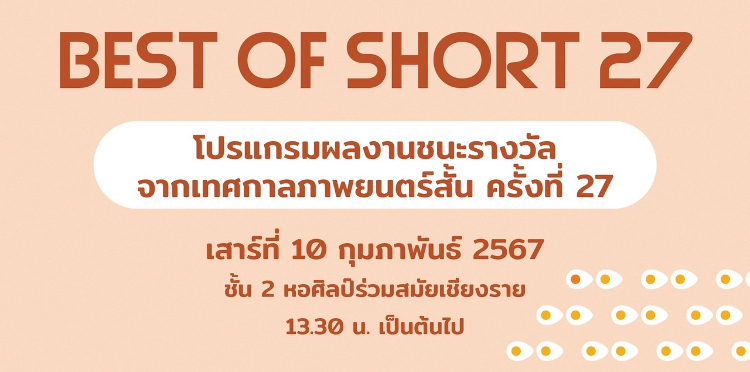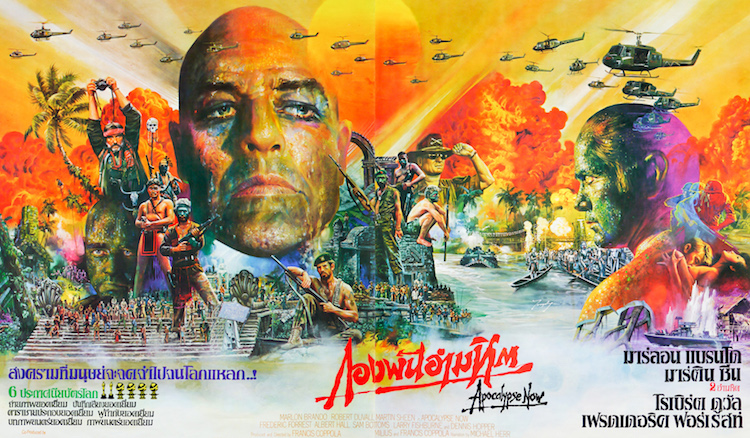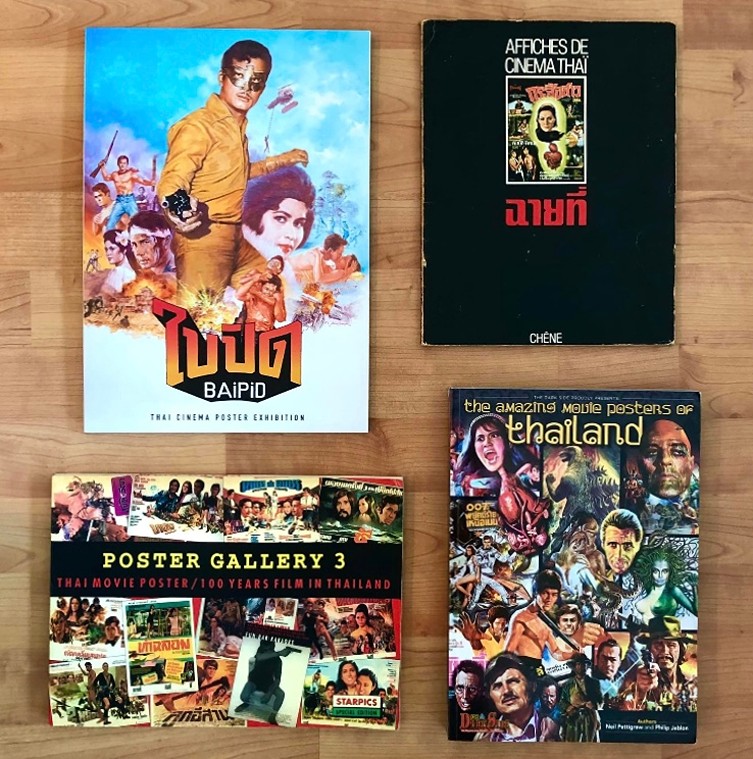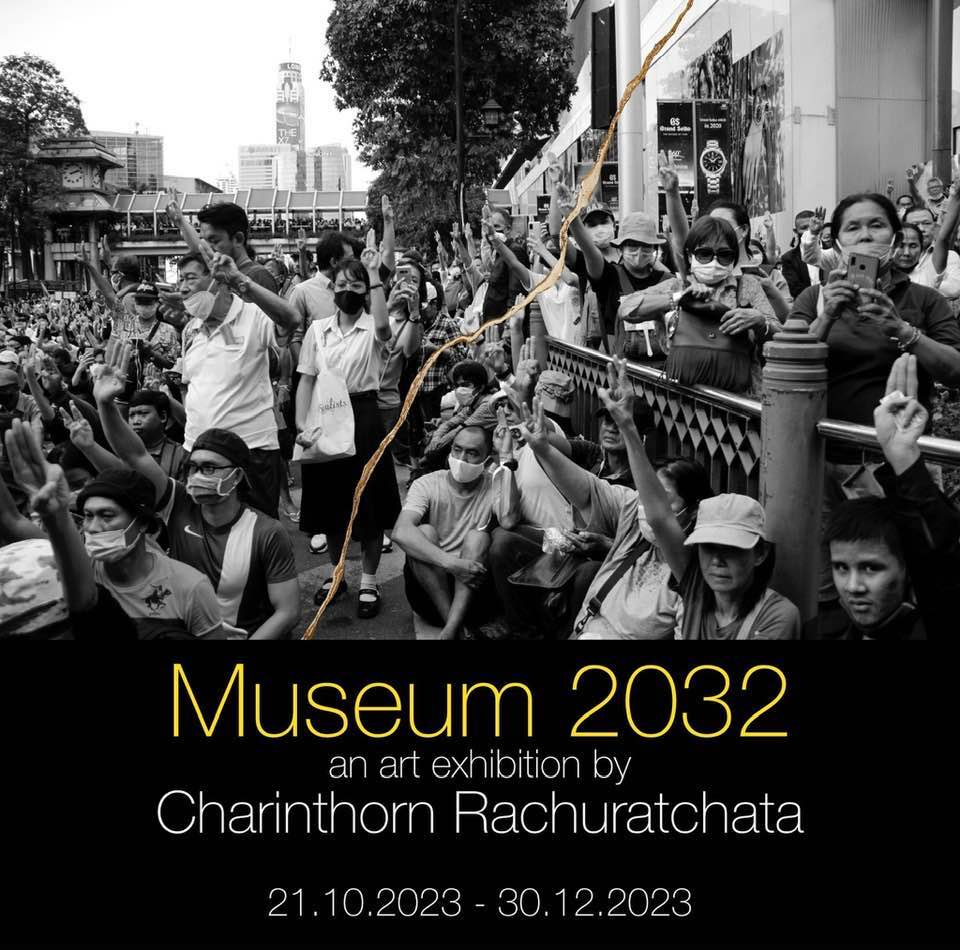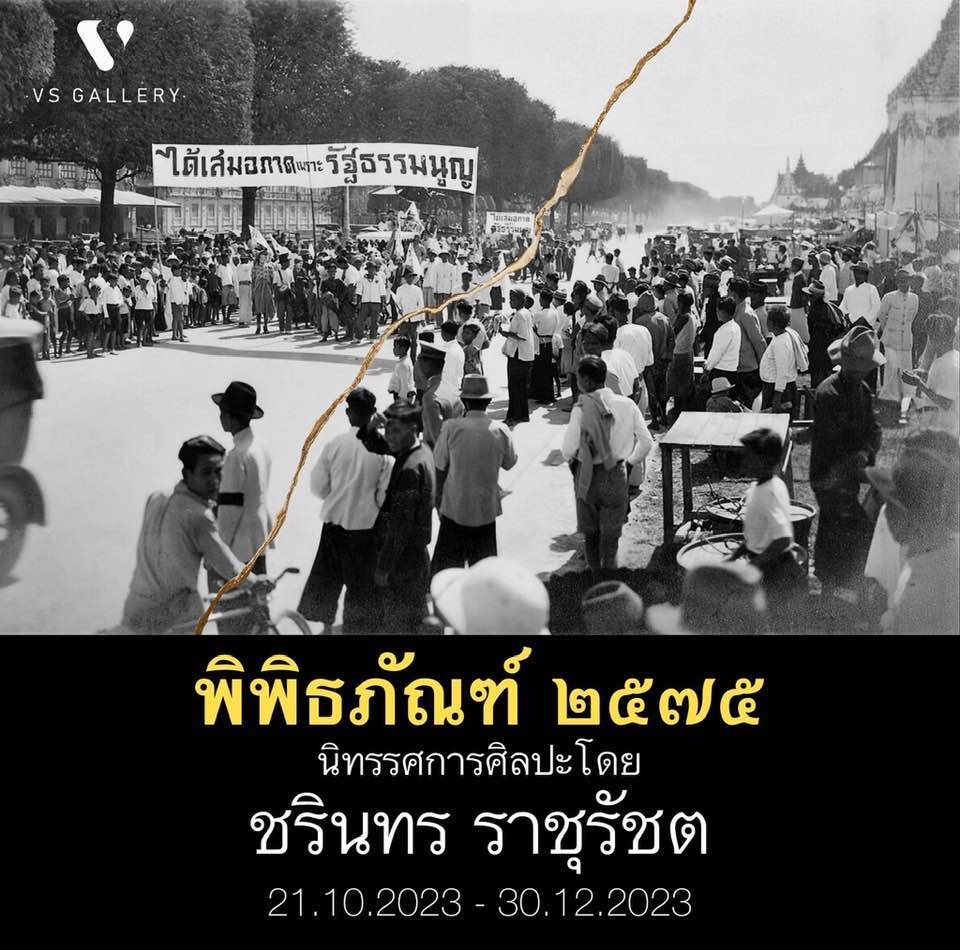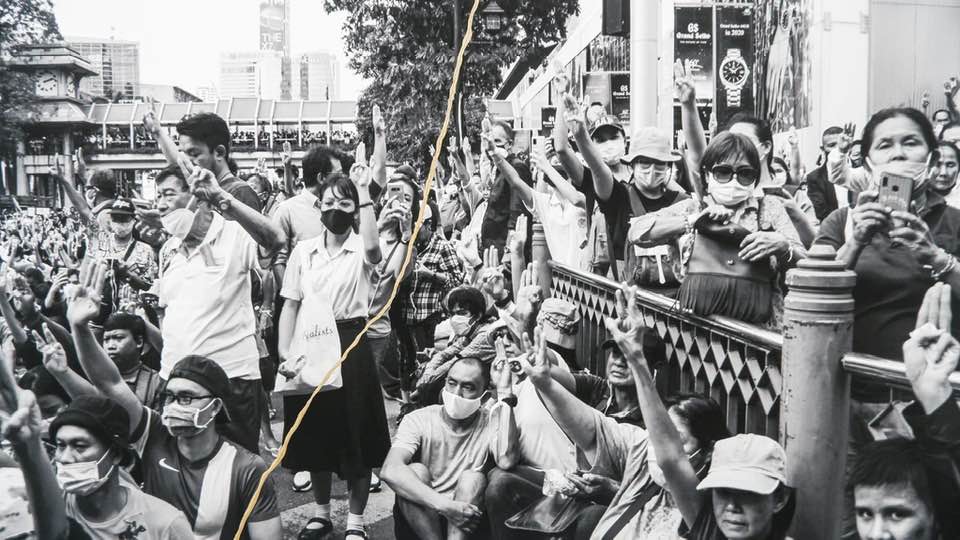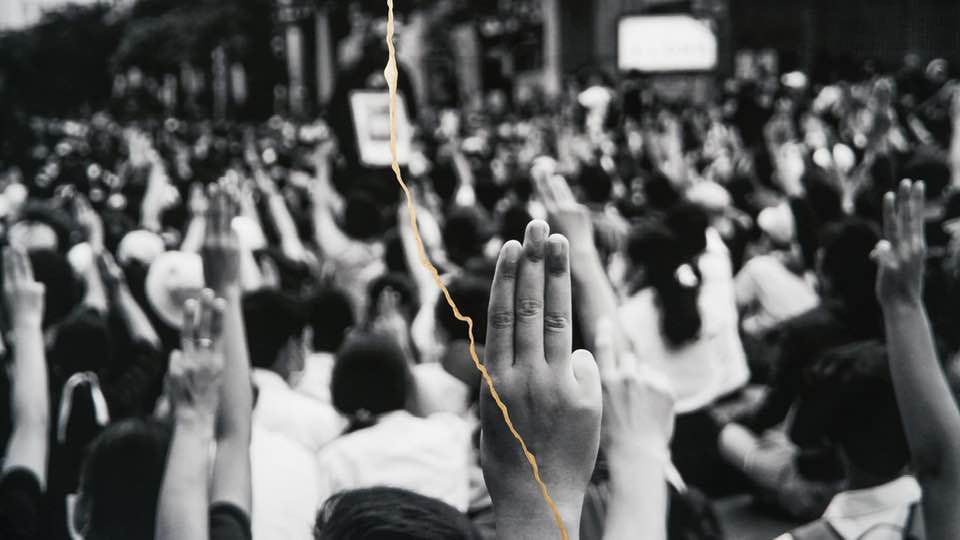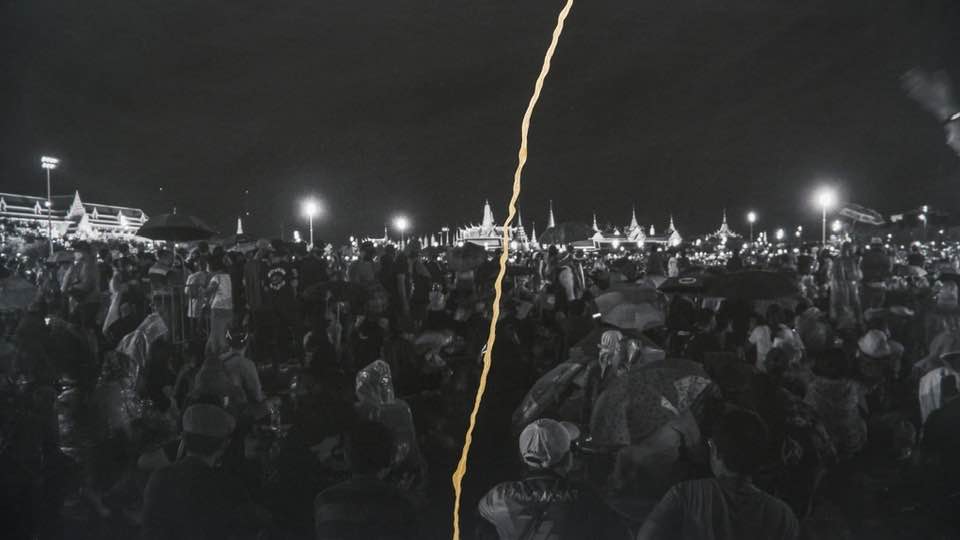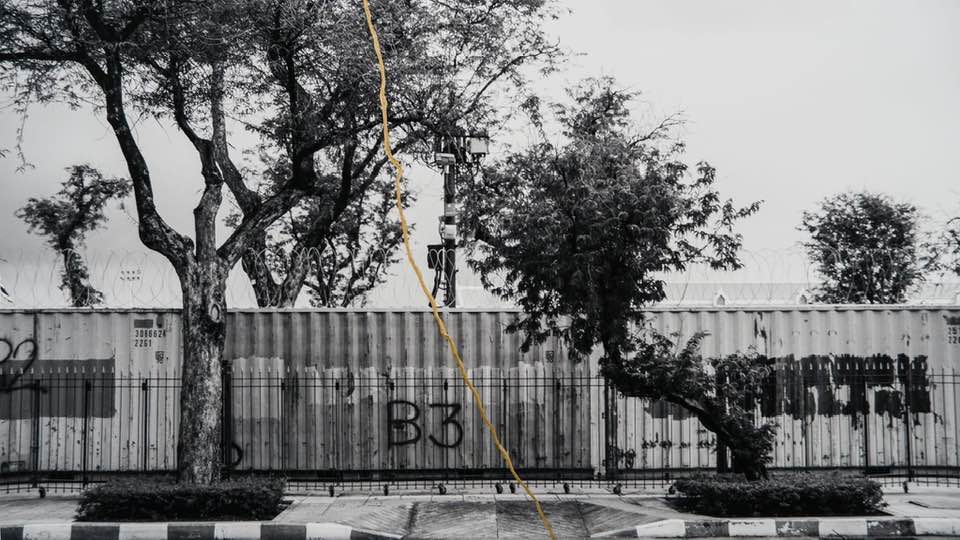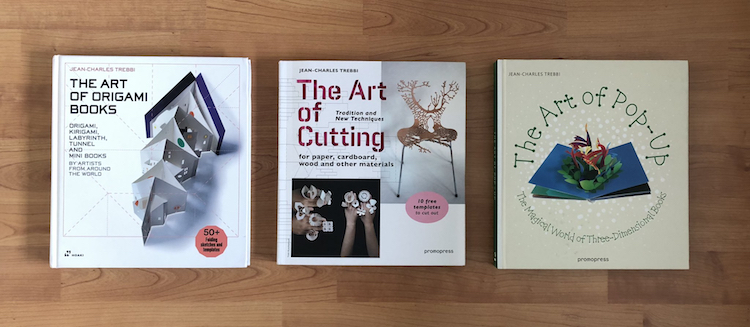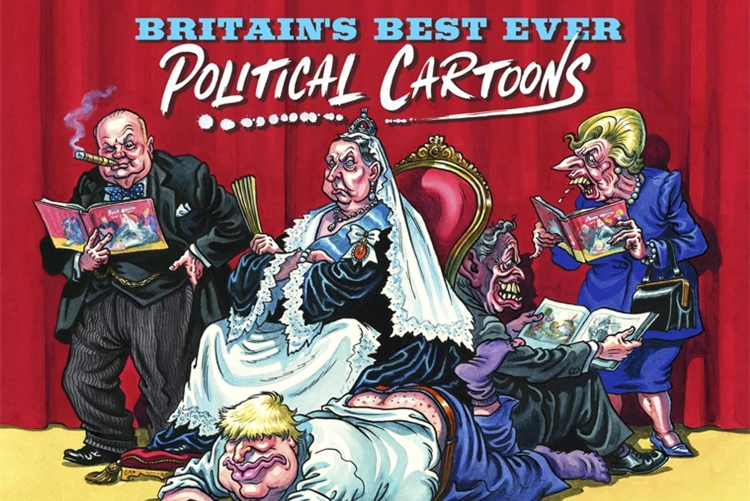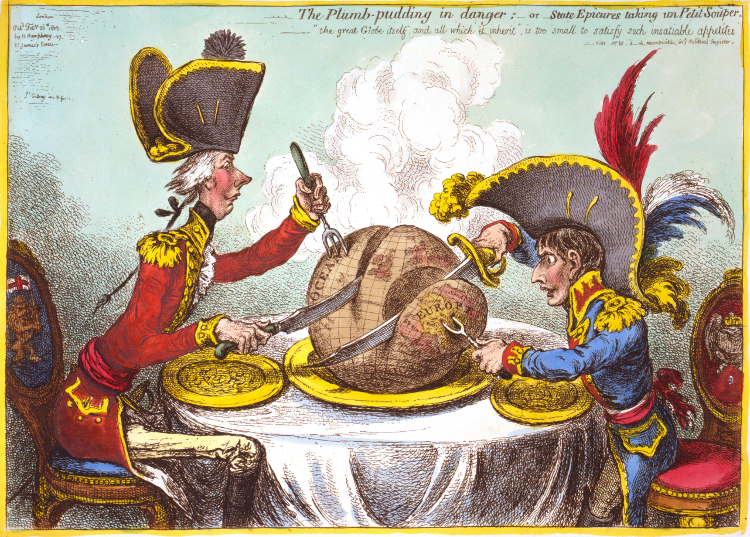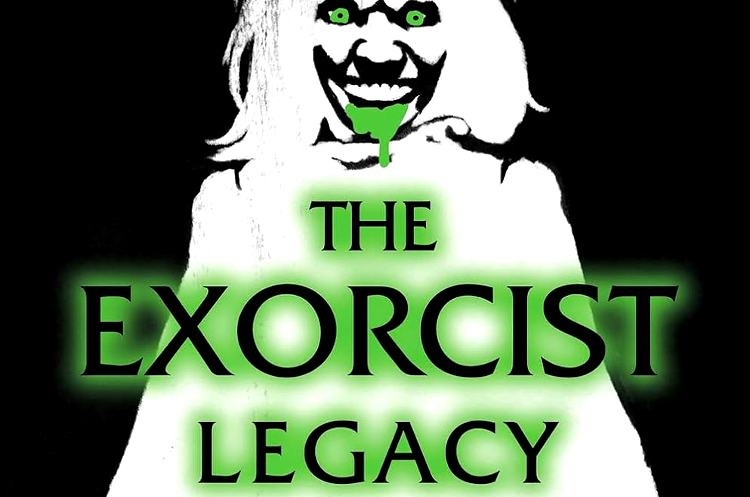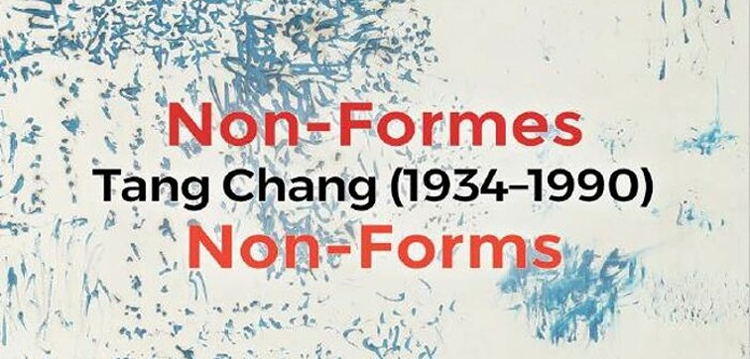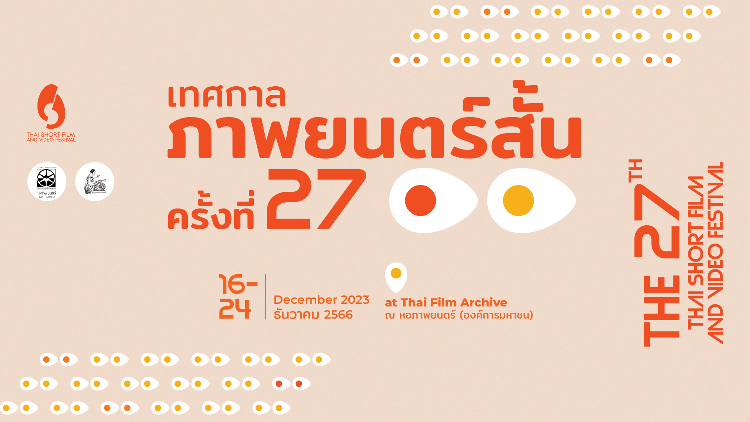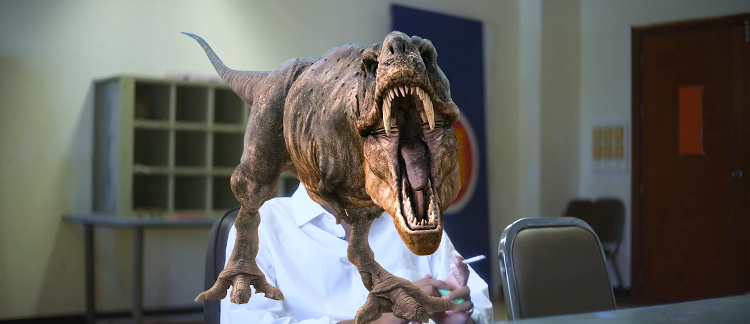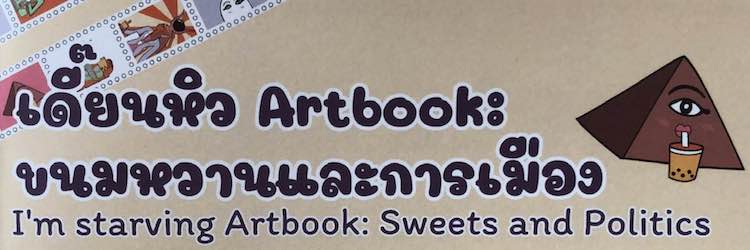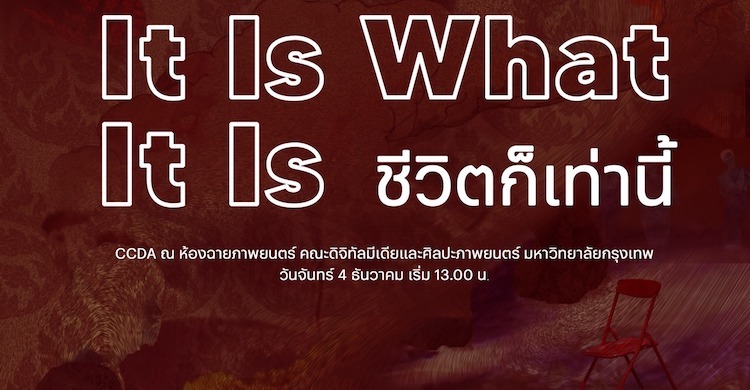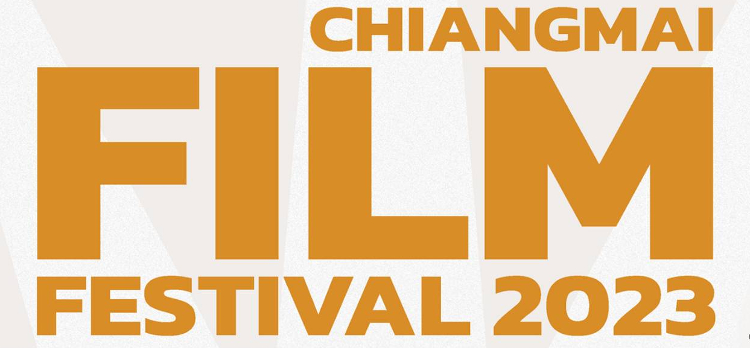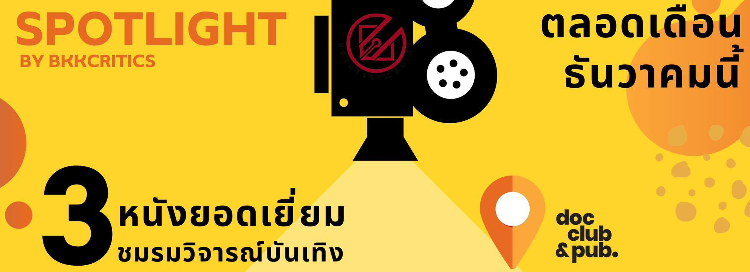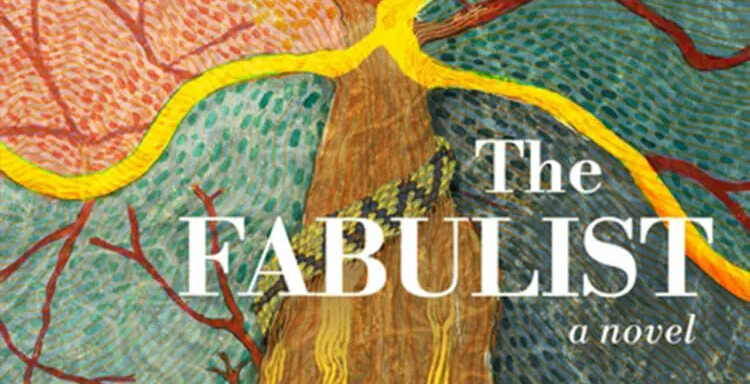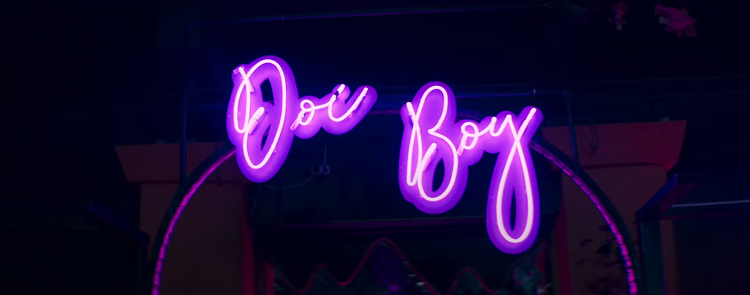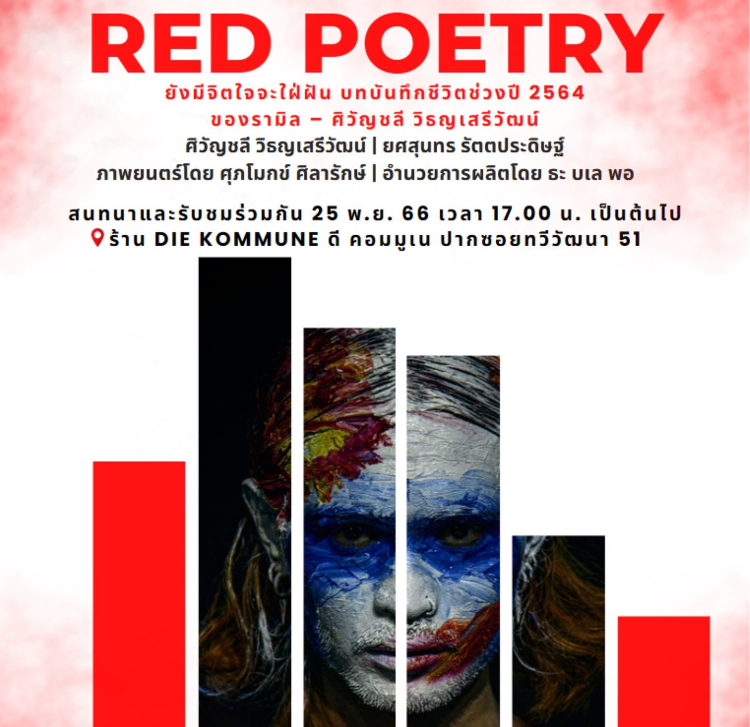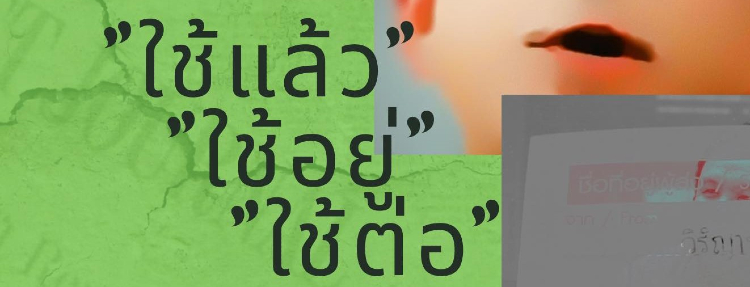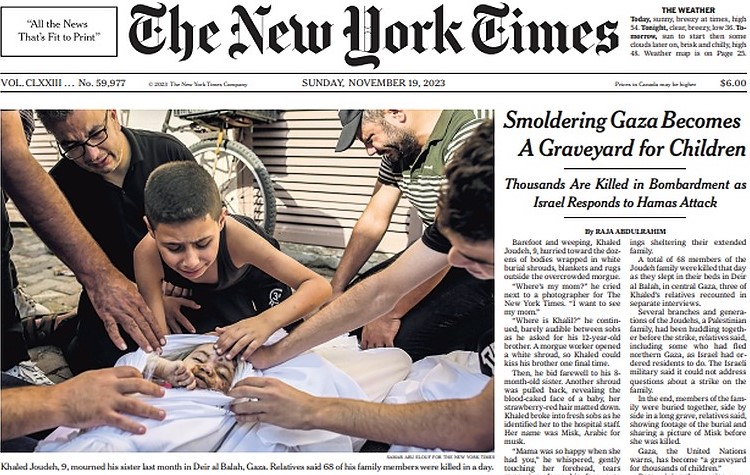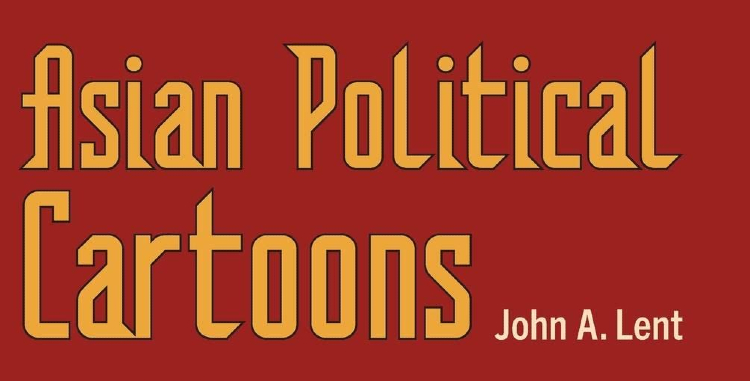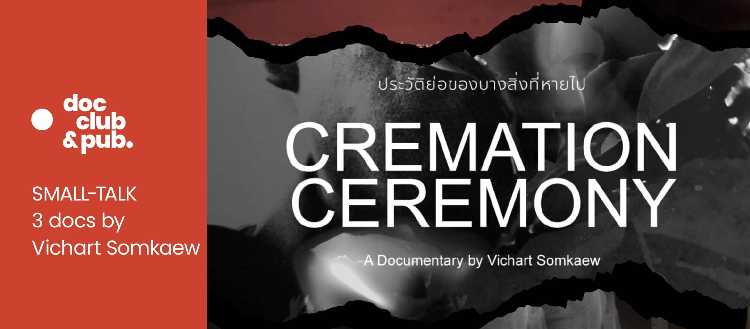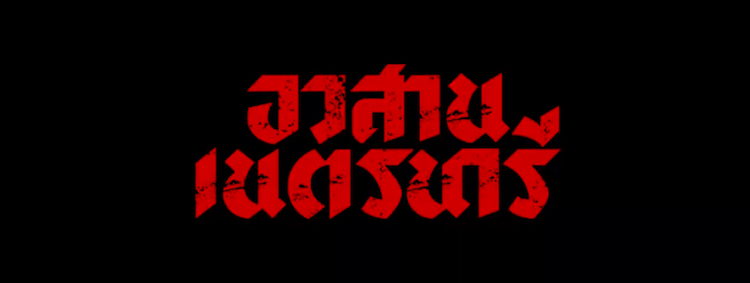
“WHAT’S YOUR DEMOCRACY, THOO?”
“DEMOCRACY? IT’S MY KIND OF DEMOCRACY.”
Seven boy scouts arrive at an abandoned camp. One of them is the son of a poacher who shot a rare black panther (in a reference to disgraced businessman Premchai Karnasuta). In the past, the others have all killed domestic cats for fun. Their karma catches up with them as a girl scout and a mysterious man hunt them down. In this supernatural horror film from Yuthlert Sippapak, the girl scout is a reincarnation of the dead cats and the man is the spirit of the panther.
The nicknames of the seven boy scouts are the same as those of right-wing Thai politicians—Thoo (Prayut Chan-o-cha), Thay (Mongkolkit Suksintharanon), Pom (Prawit Wongsuwan), Nooh (Anutin Charnvirakul), Tape (Suthep Thaugsuban), Nu (Wissanu Krea-ngam), and Mark (Abhisit Vejjajiva)—and the girl scout’s nickname, Booh, is the same as Yingluck Shinawatra’s. So the film is a political satire, with Yingluck getting her revenge on the coup-makers and protest leaders who brought down her government. (Thaksin Shinawatra’s nickname is Maew, the Thai word for ‘cat’, so the girl scout character perhaps represents both Yingluck and Thaksin.)
Thoo is the most aggressive of the boy scouts, knocking Booh unconscious, tying her up, and repeatedly punching her in the face when she regains consciousness. The real-life parallel is that Prayut led a coup against Yingluck’s government, and she has been legally persecuted ever since. (She was fined, impeached, and convicted of dereliction of duty.)
“DEMOCRACY? IT’S MY KIND OF DEMOCRACY.”
Seven boy scouts arrive at an abandoned camp. One of them is the son of a poacher who shot a rare black panther (in a reference to disgraced businessman Premchai Karnasuta). In the past, the others have all killed domestic cats for fun. Their karma catches up with them as a girl scout and a mysterious man hunt them down. In this supernatural horror film from Yuthlert Sippapak, the girl scout is a reincarnation of the dead cats and the man is the spirit of the panther.
The nicknames of the seven boy scouts are the same as those of right-wing Thai politicians—Thoo (Prayut Chan-o-cha), Thay (Mongkolkit Suksintharanon), Pom (Prawit Wongsuwan), Nooh (Anutin Charnvirakul), Tape (Suthep Thaugsuban), Nu (Wissanu Krea-ngam), and Mark (Abhisit Vejjajiva)—and the girl scout’s nickname, Booh, is the same as Yingluck Shinawatra’s. So the film is a political satire, with Yingluck getting her revenge on the coup-makers and protest leaders who brought down her government. (Thaksin Shinawatra’s nickname is Maew, the Thai word for ‘cat’, so the girl scout character perhaps represents both Yingluck and Thaksin.)
Thoo is the most aggressive of the boy scouts, knocking Booh unconscious, tying her up, and repeatedly punching her in the face when she regains consciousness. The real-life parallel is that Prayut led a coup against Yingluck’s government, and she has been legally persecuted ever since. (She was fined, impeached, and convicted of dereliction of duty.)
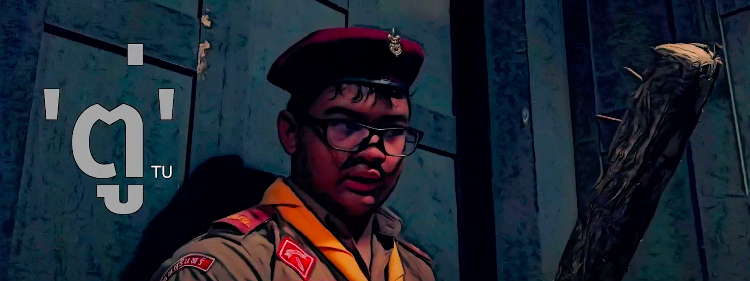
The film was shot in 2019, though it was initially shelved by its studio, Phranakorn Film, due to concerns about its political content. Yuthlert has since added an over-saturated colour filter to the image (to disguise the fact that it was shot on his iPhone), and retitled the film from Seven Boy Scouts to Nednary (อวสานเนตรนารี). The new title translates as ‘girl scout’, shifting the focus onto the female protagonist, in the same way that Yuthlert retitled another long-delayed film from Fatherland (ปิตุภูมิ) to Rachida (ราชิดา).
Interviewed in Thai Cinema Uncensored, Yuthlert described Nednary as “a political satire. Finding a way to fight back in a film in the mainstream.” The director has been politically active since the 2014 coup, and Nednary is his personal response to the last decade of Thai politics. The violent plot is also somewhat cathartic, as he explained in his Thai Cinema Uncensored interview: “No one grows up, because I kill them all!”
After this year’s election, the studio finally felt comfortable to release the film. In fact, rather than minimising the political angle, it’s emphasised in the trailer and opening title sequence, with the scouts’ nicknames shown in very large letters. (The English spellings of the nicknames in the trailer are more accurate than those in the film’s subtitles: Tu, rather than Thoo, for example.)
In case viewers miss the political allusion, it’s hammered home when the boy scouts argue about who should lead them. Thoo insists it should be him—Prayut clung onto power unconstitutionally for nine years—and the others accuse him of being undemocratic. Thoo’s reply is a Thai pun that’s not translated in the subtitles: he says that his kind of democracy is “ประชาธิปตู่.” The Thai word for ‘democacy’ is ‘ประชาธิปไตย’, though he replaces the final syllable with his own nickname; the English equivalent would be ‘Thoo-ocracy’.
Interviewed in Thai Cinema Uncensored, Yuthlert described Nednary as “a political satire. Finding a way to fight back in a film in the mainstream.” The director has been politically active since the 2014 coup, and Nednary is his personal response to the last decade of Thai politics. The violent plot is also somewhat cathartic, as he explained in his Thai Cinema Uncensored interview: “No one grows up, because I kill them all!”
After this year’s election, the studio finally felt comfortable to release the film. In fact, rather than minimising the political angle, it’s emphasised in the trailer and opening title sequence, with the scouts’ nicknames shown in very large letters. (The English spellings of the nicknames in the trailer are more accurate than those in the film’s subtitles: Tu, rather than Thoo, for example.)
In case viewers miss the political allusion, it’s hammered home when the boy scouts argue about who should lead them. Thoo insists it should be him—Prayut clung onto power unconstitutionally for nine years—and the others accuse him of being undemocratic. Thoo’s reply is a Thai pun that’s not translated in the subtitles: he says that his kind of democracy is “ประชาธิปตู่.” The Thai word for ‘democacy’ is ‘ประชาธิปไตย’, though he replaces the final syllable with his own nickname; the English equivalent would be ‘Thoo-ocracy’.

